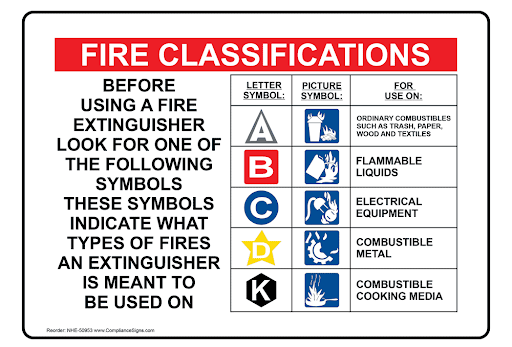Lithium Aluminum Hydride
Overview
Lithium aluminum hydride (LAH) is an odorless solid that reacts violently with water, acids and oxygenated compounds. LAH can ignite in moist air or because of friction or static sparks. It is highly corrosive to eyes, skin and mucous membranes. Conventional ABC or BC fire extinguishers can intensify a fire involving LAH and should never be used.
Emergency Procedures
Skin Contact: Brush off any visible solids. Rinse with copious amounts of water for at least 15 minutes. Seek medical attention as needed. Thoroughly clean shoes before reuse.
Ingestion: Do not induce vomiting. Drink 2-3 glasses of water and seek medical attention immediately.
All other exposures: Follow regular Emergency Procedures guidelines for eye exposure or inhalation. Seek medical attention as needed.
Fire: Use Class D extinguisher, such as Met-L-X or Lith-X or smother the fire with dry sand. Do not use water, carbon dioxide or halogenated extinguishing agents.
Spill: Control all sources of ignition. Wearing personal protective equipment, cover the spill with sand. Scoop spilled materials with spark-resistant tools and place in a container for disposal. DO NOT USE WATER or combustible materials, such as saw dust.
Handling
Wear safety glasses, impervious gloves and a fire-retardant laboratory coat. Control ignition sources and avoid dust formation. Avoid contact with water or moisture. Keep a supply of dry sand available in the work area and ensure there is a Class D extinguisher immediately available.

When large quantities of powdered LAH will be used, work under an inert gas, such as nitrogen or argon, in a fume hood or glove box. Avoid contact with water or moisture.
LAH is incompatible with alcohols, transition metal salts, oxidizing agents, and a wide variety of other materials. LAH reacts violently on contact with powerful oxidizers.
Do not grind LAH or heat it. Upon contact with water, acids or when heated, LAH produces an exothermic reaction involving release of hydrogen gas.
Storage
Store in tightly sealed containers in a cool dry place, separate from combustible materials.
Disposal
Store wastes in tightly sealed containers. Dispose as hazardous waste.
